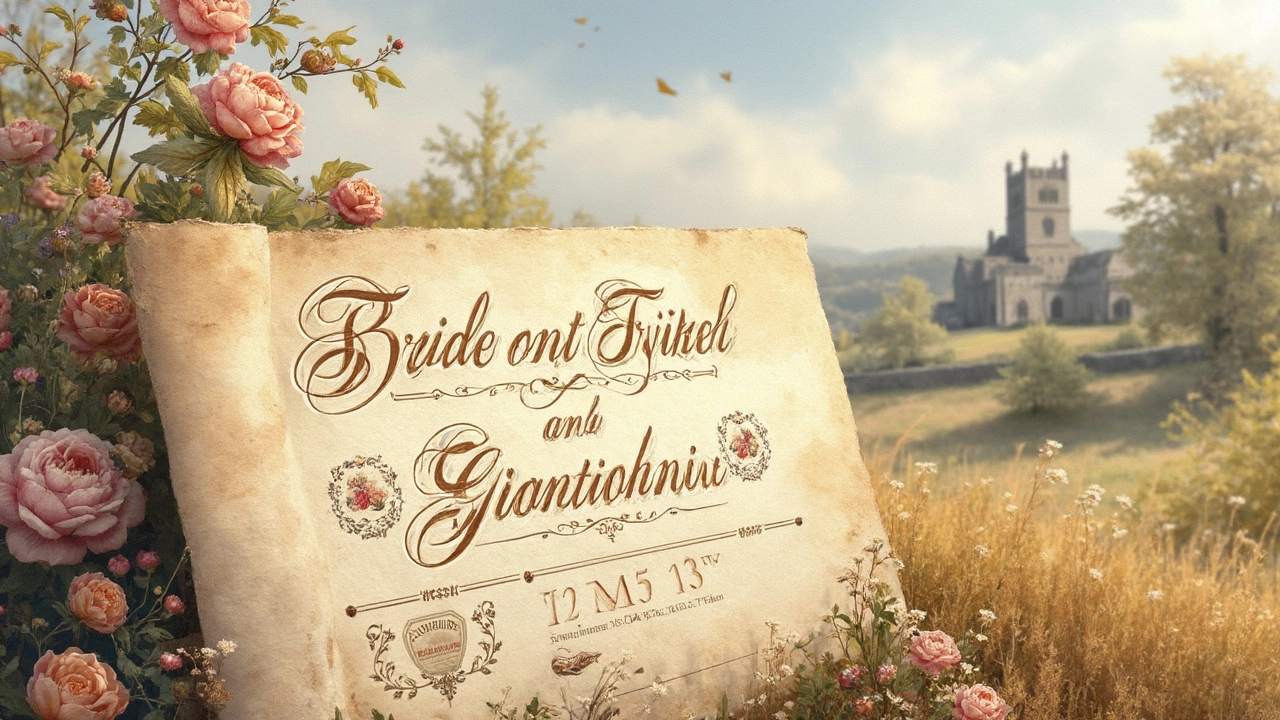So, you're getting married and staring at the blank space on your wedding invitation thinking, 'Whose name should come first?' It's a question that's surprisingly common and not as trivial as it sounds. After all, how you address your invitations can subtly set the tone for the entire event. Back in the day, it was all about tradition with the bride's name first. Pretty straightforward, right? But as with most things in life, times change.
Now, some couples just casually toss names around alphabetically, more for balance than anything else. Others might decide on a whim or based on who suggested the venue first. Seriously, it can be that random. But before you decide, think about what you're comfortable with. It's your day, after all. This isn't just about etiquette; it's about how you both want to be presented to the world as a couple.
- Traditional Etiquette Explained
- Modern Changes and Considerations
- Alphabetical Order vs. Personal Choice
- Practical Tips for Writing Invitations
Traditional Etiquette Explained
When it comes to wedding invitations, traditional etiquette has its roots deep in the history of formal events. The golden rule? The bride's name always comes first. This is partly because, historically, the bride's parents often hosted and paid for the wedding, so it was seen as a sign of respect to the hosts.
Emily Post, the grand dame of etiquette, once said,
'The bride’s family issues the invitation and therefore her name appears before the groom’s.'It’s like a little nod to the fact that it's the bride’s family welcoming guests to the ceremony.
Why Follow Traditions?
You might wonder why sticking to this seemingly old-fashioned rule matters. For many, it’s about respecting family traditions and maintaining a sense of order that connects to the past. A lot of families hold this custom dear and appreciate when it is carried on to new generations.
Consider Cultural Norms
Different cultures have their own set of rules when it comes to the order of names. For instance, some cultures place the name of the elder partner first, which might mean the groom takes the lead on the invitation. These variations reflect diverse values and ideals.
Adapting Traditions Today
Even if not entirely bound by tradition, many couples prefer using traditional formats to keep things simple and predictable. This can make the invitation easily recognizable as a wedding announcement, maintaining the excitement and formality of the event.
However, the once hard-and-fast rules are now more guidelines than anything. Plenty of couples are tweaking traditions, so if you want to break the mold a bit, you're in good company!
Modern Changes and Considerations
As traditions evolve, so does the way we approach wedding invitations. The old-school rule of putting the bride's name first has some competition now. Today, couples are ditching rules that don't fit their vibe. So, whose name goes first on an invitation? Well, it might depend on a few things.
For one, some couples flip a coin—or use a more predictable method like going alphabetically. It just feels fair. Others choose to put the name of the partner who has more family attending, giving that side a little nod. Remember, it doesn't have to be stuck in the past. What's important is that the invitation reflects your relationship.
Personal Preference and Equality
Today's approaches focus on equality within relationships. Having a say together on your wedding invitations says a lot about your partnership. It's like a heads-up to your guests that you're both important in making decisions. This can even extend to how you plan events or future decisions together. It's all about what matters to you both.
Same-Sex Couples and Current Trends
Same-sex couples have added a whole new layer to this conversation. Without traditional roles or expectations, many couples pick what feels right for them—often leaning towards alphabetical order or deciding based on personal quirks. For these couples, it isn't just about breaking traditions; it's about creating new norms that fit.
- Alphabetical order offers a neutral choice that feels balanced.
- Using personal significance (like who popped the question) gives invitations a story backed by meaning.
Ultimately, who goes first isn't as important as what that name placement represents—an invite to celebrate your unique blend of two lives becoming one.

Alphabetical Order vs. Personal Choice
Alright, now let's talk about another way to figure out whose name goes first on those precious wedding invitations. If the old-school bride-first tradition doesn't vibe with you, why not consider the alphabetical order? It’s probably the most straightforward method and pretty fair if you think about it.
However, be mindful of what you want to emphasize. Alphabetical order is neat and unbiased, but if your names happen to be Anne and Zach, well, there might be some obvious advantages and disadvantages in terms of readability and sound. But hey, it's all about what feels right for you and your partner.
Factoring in Personal Choice
Here’s the thing: it's your wedding, and you both can decide what looks or sounds best on those invites. Go with what feels like the truest representation of you two as a partnership. So, maybe put Zack before Anne because you met on a Tuesday, or because Zack first suggested that amazing Italian venue you both adore.
No hard and fast rules here; just personal preference. And yes, it’s perfectly okay to mix it up from how grandma did it back in the 60s. The world’s moved on, right? Make sure every decision reflects you both as a couple, from the invitation wording to the ceremony itself.
| Pros | Cons |
|---|---|
| Fair and unbiased | May affect readability |
| Simple decision-making | Less emphasis on relationship dynamics |
Bottom line: whether it's alphabetical or based on a quirky internal rule just the two of you get, aim for what's true to your relationship dynamics because, at the end of the day, this day is all about celebrating your unique journey together.
Practical Tips for Writing Invitations
Writing invitations can seem like a daunting task, but with a few straightforward tips, you can make it a breeze. Let's make sure your wedding invitations are as unique and special as your big day.
Choose Your Style
First up, decide on the overall tone and style of your invitation. Are you going formal, or keeping it casual? Formal invites might demand the traditional wording, while casual ones allow more flexibility and creativity. Once you nail the style, everything else falls into place.
Double-Check the Names
Make sure every name on the list is spelled correctly. It's awkward having a name mishap! If you're unsure about someone's full name or how they spell it, just ask. It’s all about making your guests feel valued and welcome.
Include the Important Details
- Date and time of the ceremony
- Venue address
- Dress code (if there's any, like 'black tie' or 'beach casual')
- RSVP instructions
Sometimes, less is more. Stick to the essentials, and if there’s additional info, consider adding an insert or directing guests to your wedding website.
Add That Personal Touch
Personal touches can make a world of a difference. A quick handwritten note on each invitation can mean a lot. You could also use custom stamps or wax seals for a bit of charm.
Keep Track with a Checklist
Finally, to avoid any last-minute panic, create a checklist: List all your guests, verify their addresses, ensure you have enough postage, and check off each name as the invites are mailed. It keeps things organized and your mind at ease.
